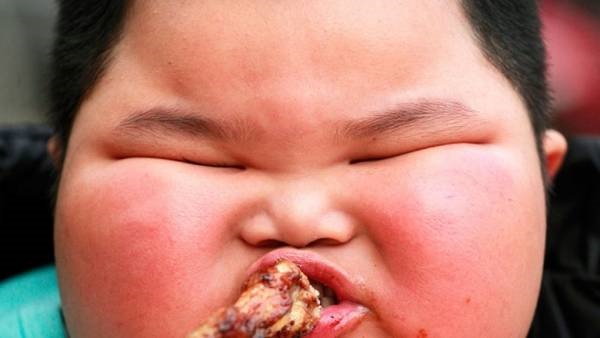Makes sense. But most families go for uniform eating routines rather than catering to different kids’ desires and needs. The result may be that some kids are not getting the type and amount of nutrients they need for optimal growth and development…
 ‘Avid’ eaters turn into fat kids. Fat kids turn into overweight and
‘Avid’ eaters turn into fat kids. Fat kids turn into overweight and
obese teens. And overweight and obese teens turn into…
A research team from Aston University (UK) wanted to see whether different kids had different eating habits. And, if so, how those differences affected their growth, development and overall health.
What they wanted to know
Dr. Abigail Pickard of Aston U. recruited a team of associates from a number of other British universities to help conduct a two-part study of the differences in kids’ eating habits.
The introduction to an abstract of the study report explains: “In the UK, around a fifth of children are overweight or living with obesity when they begin school, rising to around a third by the time they leave primary school at age 11. The team sought to identify eating behaviour patterns and how these are associated with temperament, feeding practices and food insecurity, as a way to predict which children are more at risk of becoming overweight.”
They first wanted to identify the different types of kid eaters. Then they wanted to see how different eating habits effected the kids’ health.
What they did
The primary goal of the study was to determine the effect of different habits on the risk of kids developing childhood obesity.
Researchers gathered and analysed reports and observations on elementary school age children from a number of British towns and cities.
What they found
They discovered that all kids fall into one of 4 eating patterns: ‘avid’, ‘happy’, ‘typical’ and ‘fussy’. When you step back a moment and consider it, it seems as though we already knew that. But not in the sense that different kids needed different feeding attention.
Applying those categories to the kids in the study, the team identified some salient points:
- 44 percent of the children in the study were ‘typical’ eaters
- 16 percent were classified as ‘fussy’ eaters – and
- 17 percent were ‘happy’ eaters – but
- 20 percent were found to be ‘avid’ eaters.
And it was the ‘avid’ eaters who interested the researchers most.
‘Avid’ and ‘happy’ eaters shared several key behaviours including: greater enjoyment of food, faster eating speed, and weaker sensitivity to internal cues of ‘fullness’. But ‘avid’ eaters also ate more, or wanted to eat more in response to the sight, smell or taste of palatable food, and displayed a higher level of emotional overeating.
The takeaway
“Whilst feeding practices are key intervention targets to change children’s eating behaviour and child weight outcomes, there has been little evaluation of how feeding practices interact with children’s food approach behaviours to predict eating behaviour,” said study spokesperson Dr. Jacqueline Blissett.
Pickard explained how the study’s findings can help parents help their kids avoid becoming overweight or obese: “Parents can use this research to help them understand what type of eating pattern their child presents. Then based on the child’s eating profile the parent can adapt their feeding strategies to the child.
“For example, children in the avid eating profile may benefit more from covert restriction of food, i.e., not bringing snacks into the home or not having foods on display […] Whereas, if a child shows fussy eating behaviour, it would be more beneficial for the child to have a balanced and varied selection of foods on show to promote trying foods without pressure to eat.”
My take
Good old common sense prevails, again.
I wholeheartedly support Dr. Pickard’s team’s findings. And I believe her recommendations for parents will achieve the results desired in controlling kids’ eating habits.
But what makes me chuckle is, the study findings and takeaway just serve to confirm that most parents should already know about their kids’ eating habits.
The question I ask is, “Do many parents make the effort to examine their kids’ eating habits with an eye to indicators for overweight and obesity? Do parents chiefly pass off chubby kids as still carrying ‘baby fat’? My sense is, a lot do. It’s easier than getting off their chubby adult butts and being proactive.
Enough with the excuses! Parents have not only the opportunity but the obligation – to their kids and to society – to ensure that their offspring grow into their teen years with healthy eating habits.
~ Maggie J.

